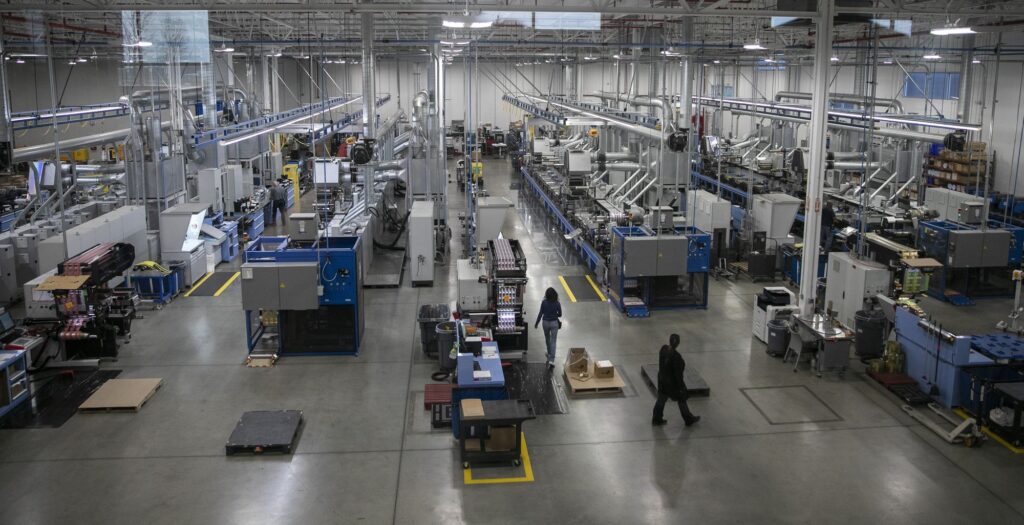
As architects who design warehouses and other facilities that play a crucial role in supply chain management, we like to keep a close watch on American manufacturing trends. Particularly when those companies work exceedingly hard to keep their supply chain within the continental United States.
Bath & Body Works was founded in 1990 in Ohio and gripped the attention of the millennial generation in particular, who came to adolescence with infamous scents like cucumber melon and juniper breeze. It has adapted with the changing whims of retail in its 30 years of existence, maintaining a deep and loyal fan base. The brand is actually a subsidiary of L Brands, sharing sisterhood status with Victoria’s Secret. But, where Victoria’s Secret has floundered, Bath & Body Works has soared.
The brand religiously releases new scents in their lines of products, keeping customers curious and devoted to trying them all. There are even digital communities on social media dedicated to discussing the latest products and ranking them.
So, it was no surprise to learn the work the innovative brand has done to persuade partner companies within its supply chain to move near its hub in Ohio. Prior to this development, a singular bottle of foaming hand soap (MSRP $7.95) took three months to create and traveled over 13,000 miles from offshore manufacturing companies as far away as China.
Since its fan base is so rapt by the development of new products, Bath & Body Works set its path towards getting products to market as fast as possible—which meant bringing it all home. This trend of bringing jobs to the United States took flight during the height of the Covid pandemic when supply chains were massively disrupted.
However, the company kicked off the process to bring production home back in 2008, requiring copious negotiations with often skeptical suppliers. Now, there are 10 manufacturers and millions of square feet of production and warehouse spaces–with 5,000 employees working in peak production capacity–all based at the headquarters in Ohio (SOURCE).
The result of this shift to all local? Getting a bottle to distribution now takes 21 days and covers just a few miles. Since 2019, annual sales have increased $2 billion.
Stories like those of Bath & Body Works are all part of a government funded practice, influenced by consumer demand/supply chain issues. The impact is a factory building boom–the most in more than 20 years.
Though Bath & Body Works’ success and business model won’t translate into every industry, it is an example of what can become possible when supply chains are closely held and coordinated. And when those industries need new warehouses designed for their growing facilities? COR3 is here to help.
